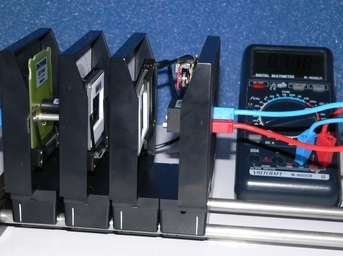Principle
If the light is reflected by a glass pane it is polarised i.e. the degrees of freedom of the vibration are restricted and the wave then only vibrates in a single direction. If such polarised light falls onto a polarisation filter only allowing light through in one particular direction of vibration, the intensity of the light is attenuated or even blocked completely.
Benefits
- Specified for the requirements of the german final secondary-school examinations
- Especially for secondary schools
- Quantum and wave optics in a student experiment
Tasks
How does light vibrate? Light is an electro-magnetic transverse wave, which means that it vibrates at right angles to the direction of propagation. Determine the dependency on the angle of the transmission of a polarisation filter by means of a photodiode. Determine the relationship between the angle of polarisation and the intensity of the transmitted light.





